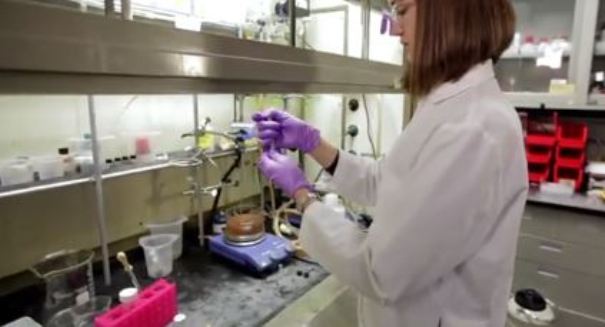
While the nanomedicine will likely prove an effective treatment for all sufferers of fungal infections, IBM expects that it will be especially useful for people who suffer from chronic fungal infections.
If asked about who would create the next groundbreaking cure in the medicine world, most people would never have predicted IBM – a computer company – as the most likely candidate. However, according to a recent report published on Venture Beat, IBM has developed a new “nanomedicine” that could become the standard for treating fungal infections.
Developed between IBM’s research center in San Jose, California and the Institute of Bioengineering and Nanotechnology in Singapore, the new nanomedicine was engineered out of common plastic particles and is roughly 1,000 times smaller than a single grain of sand. Researchers claim that the groundbreaking new medicine is ideal for treating fungal infections like athlete’s foot – especially in cases where the fungus has become resistant against most antibiotics. Even better, the new medication is advanced enough to target only bad or threatening cells, while leaving the rest of the body alone.
So how does it work? Supposedly, scientists can electrically charge the small particles of the nanomedicine so as to render them with an attraction to only the cells of fungal infections. The nano particles can then execute a virtual “search and destroy” maneuver against the fungi, attaching themselves to fungal cells, combining with their chemical composition, and then actively tearing them apart from the inside out.
The nature of the nano particle attack against cells essentially makes it so that fungal cells cannot become immune to the medicine in the way they do to more standard anti-fungal medications. This is because the nanomedicine does not go to work in the way the average drug does. The battle is waged directly against the membrane walls of the fungus, and once the membrane is destroyed, the fungal cell is killed. The average drug remedy is not only less effective in destroying the fungal cells, but is also more damaging in the long run, as it attacks healthy cells and fungal cells almost indiscriminately.
The new IBM nanomedicine is a feat of innovation that, according to James Hedrick, an advanced organic materials scientist at IBM’s San Jose research center, took research into account from supercomputing, green chemistry, and the healthcare industry in order to be fully realized. Now, the medicine can be made from recycled plastics. It is completely non-toxic and environmentally-friendly.
While the nanomedicine will likely prove an effective treatment for all sufferers of fungal infections, IBM expects that it will be especially useful for people who suffer from chronic fungal infections and who have to deal with bacteria that has become immune to average drug medications. For instance, suffers of autoimmune diseases often face frequent fungal infections and have for years needed a more effective means to destroy them. IBM’s nanomedicine could be just the ticket.
Leave a Reply